Arts & Culture
Three Artists You Should Look Out For This 2018
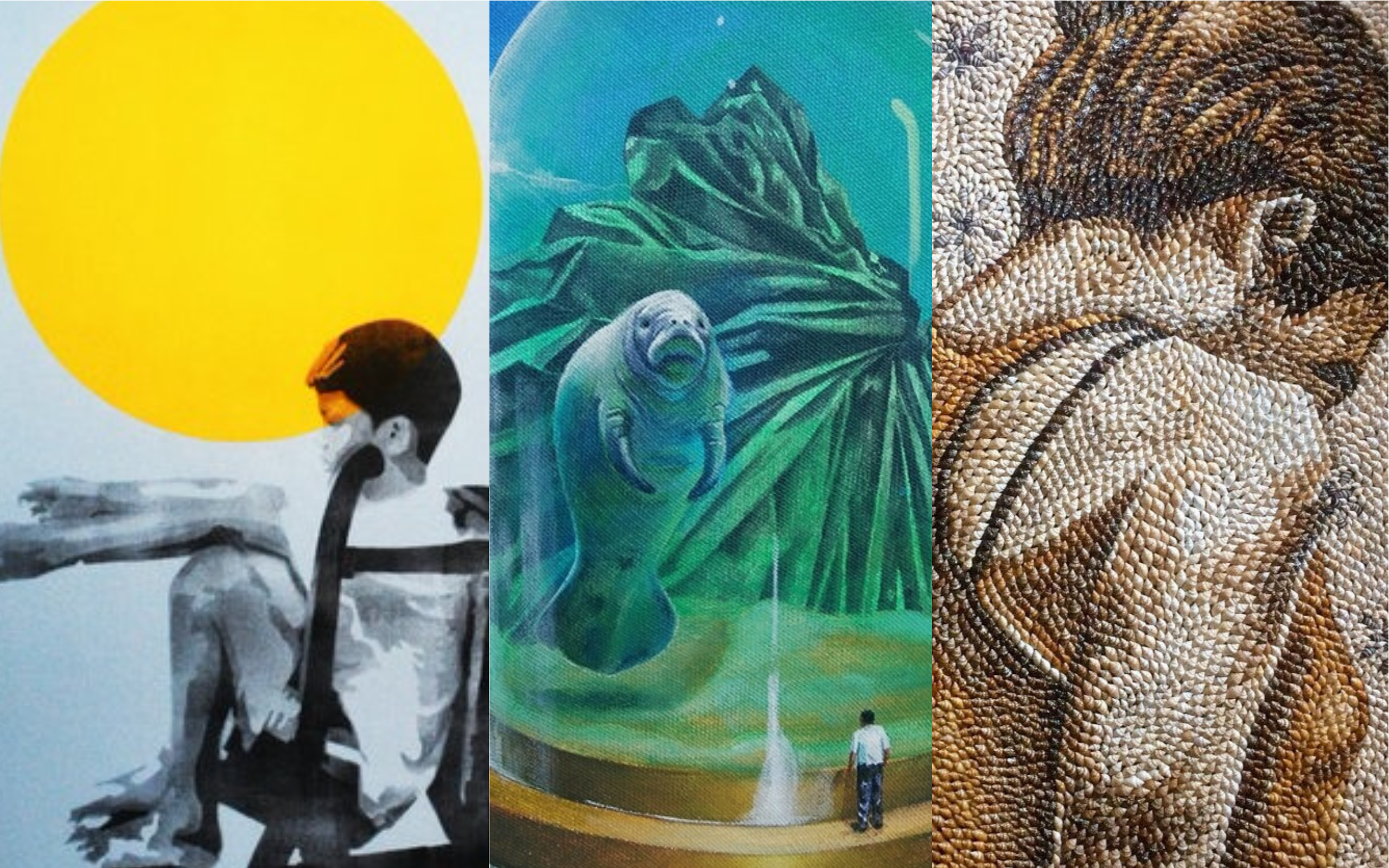
“Art, freedom and creativity will change society faster than politics.” – Victor Pinchuk
Artists have been in this world since who knows when. From as simple as drawing a picture to creating award-winning films, their outputs served as both entertaining and meaningful to their audience.
Here in Cebu, we have unquestionably contributed equal share of talents. As years go on and on, the Cebuano art scene is continuously growing, adapting and evolving at the same time.
Last year, the Cebuano creative circle proved that art’s life is unending. Galleries of well-known Bisaya artists are still highlighted events. In fact, some newbies who aspire to participate in the art scene showed not only good potential skills but perceive themselves as people who can actually make a difference. And I’d like to quote Maria Gigante’s answer in Binibining Cebu 2017, “As a millennial, I have learned that you should never be afraid of being the same. Being one in an army of people who are ready and willing to make a difference in the world.”
That rings true to these three artists who not only earned the limelight in visual arts, but also deserve to be role models in our society.
The Archiver: Mark “Kidlat” Copino

Marc Copino, more famously known as Kidlat, is known for his minimalist stencil works. He stopped attending art school and made his way to the art scene in a different approach.
Have you always been this artistic?
“Yes. I developed my skills through my passion in street art. My first exhibit was in Kukuk’s Nest in 2005. That time, it really wasn’t something of a big deal. But last year, I got the opportunity to have a show in Qube Gallery and that, for me, was something more.”

“Ang Pagpanimpalad sa Managhigala Didto sa Groto sa Punta “
Where do you get your inspiration?
“Mostly from everywhere, I’m quite the observer and I would usually just soak everything up like a sponge. The main inspiration though is my kid, Elias. Seeing him grow up brings a lot of memories from my own childhood and I would incorporate those in my art. In fact, he’s my model.”
Who are your role models when it comes to art?
“I have a lot of role models, it’s really hard to put them all in one list. I do appreciate the classical painters though, like Picasso, Francis Bacon and Michael Borremans.”
What projects are you currently working on?
“Currently I’m just experimenting with different styles in using stencils, some commissioned works which were recently finished. Mainly all just in preparation for my next solo show this year.”

“Mga Hunghong sa Labang-labang nga Duwa”

“Barko-Barko”
Other than visual arts, is there any other type of art you want to explore?
“I’ve always fantasized of making art through sound. Also Performance art. I actually tried performance art years ago but I want to make more now.”
As an artist, what do you think is your role in society?
“That’s a big question. You see, I have this need to create and how I see myself is more of an archiver of people’s experiences. I collect ideas, feelings and situations from everybody — categorize them and basically show it to the audience.”
What is your message to young aspiring Cebuano artists?
“Have fun. That’s the main thing. If you don’t have one then hey, what’s the point?”
The Visionary: Jayson “Daot” Bacunador

Daot may ring a bell or two. A graduate from University of the Philippines, his works are mostly influenced by pop culture. Colorful and surreal, he takes the audience to another dimension of how he sees everything.
Have you always been this artistic?
“As far as I can remember, it may have been in kindergarten. My mother is artistic and I can still remember how supportive she was back then– until now. But I remember how my skills were sharpened in high school because I’ve always joined poster-making contests. And of course, I enhanced it through graffiti.”

Sightseer
Where do you get your inspiration?
“Almost anything can be my inspiration. But when it comes to style, I’m inspired between pop art and realism. I have also developed a habit in putting orbs in my works which is inspired by the three psyches of a person: the id, ego and super ego.”
Who are your role models when it comes to art?
“I’ve always idolized artists whose works can not only be seen in canvas, but also in murals, ads, shirts or shoes even. Kaws [Brian Donnelly] is one of my favorite. His works are seen almost anywhere.”

What projects are you currently working on?
“I’m working with something commission-based but it would be nice to have another gallery this year– may it be solo or part of a group. There a lot of art events this year that I will be participating on and I aim to grow my audience.”
Other than visual arts, is there any other type of art you want to explore?
“Yes. I’ve always wanted to try sculpting. I want to make a character and maybe experiment on how he should look like. I mean, as an artist, it’s hard trying to find your own identity and exploring is my way of enhancing my skills.”

As an artist, what do you think is your role in society?
“I have big dreams for myself and for this world. I would consider myself as a provider of something interesting and expose it to people who are deprived from visual art. I want to inspire other artists, especially new ones.”
What is your message to young aspiring Cebuano artists?
“Dedicate your time to your craft, I guess. Be consistent in your progress and your attitude towards your works. Don’t be afraid of criticisms because that’s one significant element for you to evolve.”
The Mediator: Lhee Deiparine Taneo

Lhee is another contemporary artist who unexpectedly found her edge due to her thesis in University of the Philippines. Shells imported from Olango Island is transformed by the artist into a beautiful mosaic piece.
Have you always been this artistic?
“Unlike others who were born artistic, I wasn’t. When I was young, my dad had always been crafty and seeing him creating stuff made me interested in art. Apparently that interest became an urge to learn which is why I went to art school. In fact, most of my skills were developed through education already.”

Where do you get your inspiration?
“I’m inspired by random everyday thoughts that I consider relevant and should be taken consideration of.”
Who are your role models when it comes to art?
“One of the people I look up to is Frida Kahlo. I admire her strong personality and her perspective despite her tragic and melancholic life. Another artist I like is Jason Dussault. He makes tiles mosaic and they are all beautiful.”
What projects are you currently working on?
“Last year I was able to have my solo exhibit. This 2018, I am currently working on another exhibit. On the other hand, I make portraits every now and then if someone would request it.”
Other than visual arts, is there any other type of art you want to explore?
“My family have showed great interest in music. Maybe art through music would be nice to try. I also like the idea of making films especially documentaries. The thing is, it’s safe to say that I still have more room to grow. Maybe if I have more resources, I’d be glad to experiment on what else I am capable of.”


As an artist, what do you think is your role in society?
“I’d like to see myself as someone who reminds other how important it is to co-exist with each other. Most of the people are ignorant about what other’s are going through. Artists, for me, can be in other people’s shoes because I think we are keen enough to notice the things that most people overlook.”
What is your message to young aspiring Cebuano artists?
“Remain human matter how big you become.”
Kidlat, Daot and Lhee represent all artists not only in Cebu but all over the world. The way they see themselves as an active part of the society surely is an inspiration inside and outside their circle.
Arts & Culture
Visayas Art Fair Year 5: Infinite Perspectives, Unbound Creativity
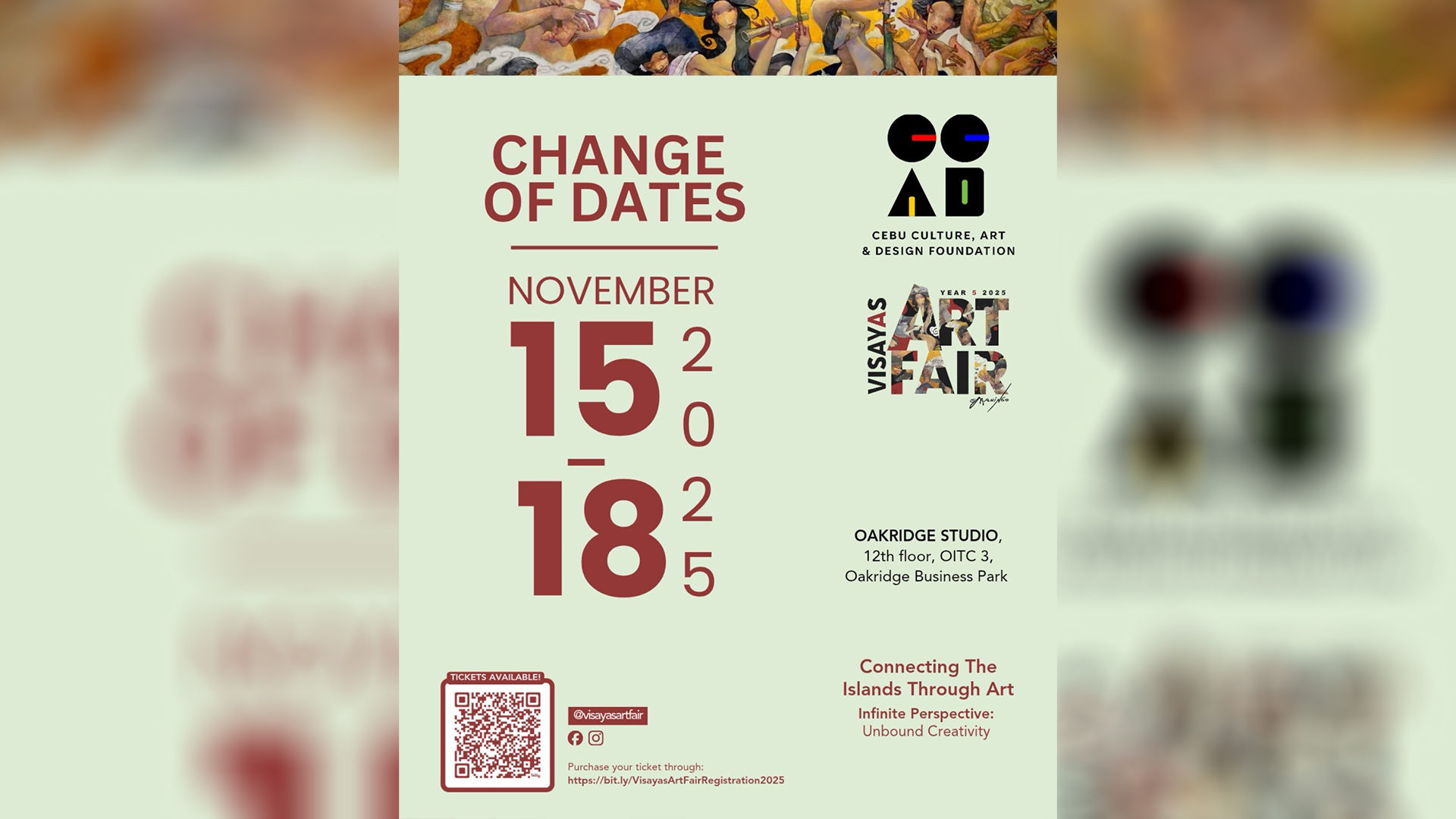
by Jing Ramos
This year’s Visayas Art Fair marks its 5th anniversary, celebrating the theme “Infinite Perspectives: Unbound Creativity.” The fair continues its mission of bridging creativity, culture, and community in the country. This milestone edition strengthens its partnership with the National Commission for Culture and the Arts and expands collaborations with regional art organizations and collectives—reinforcing its role as a unifying platform for Philippine art.
VAF5 features the works of Gil Francis Maningo, honoring the mastery of his gold leaf technique on opulent portraits of the Visayan muse Carmela, reflecting spiritual awareness.
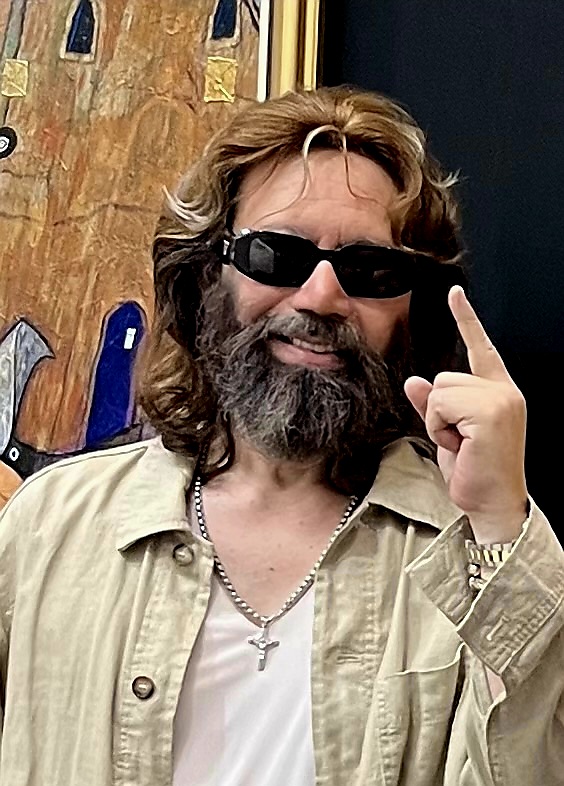
Gil Francis Maningo is celebrated for his gold leaf technique.
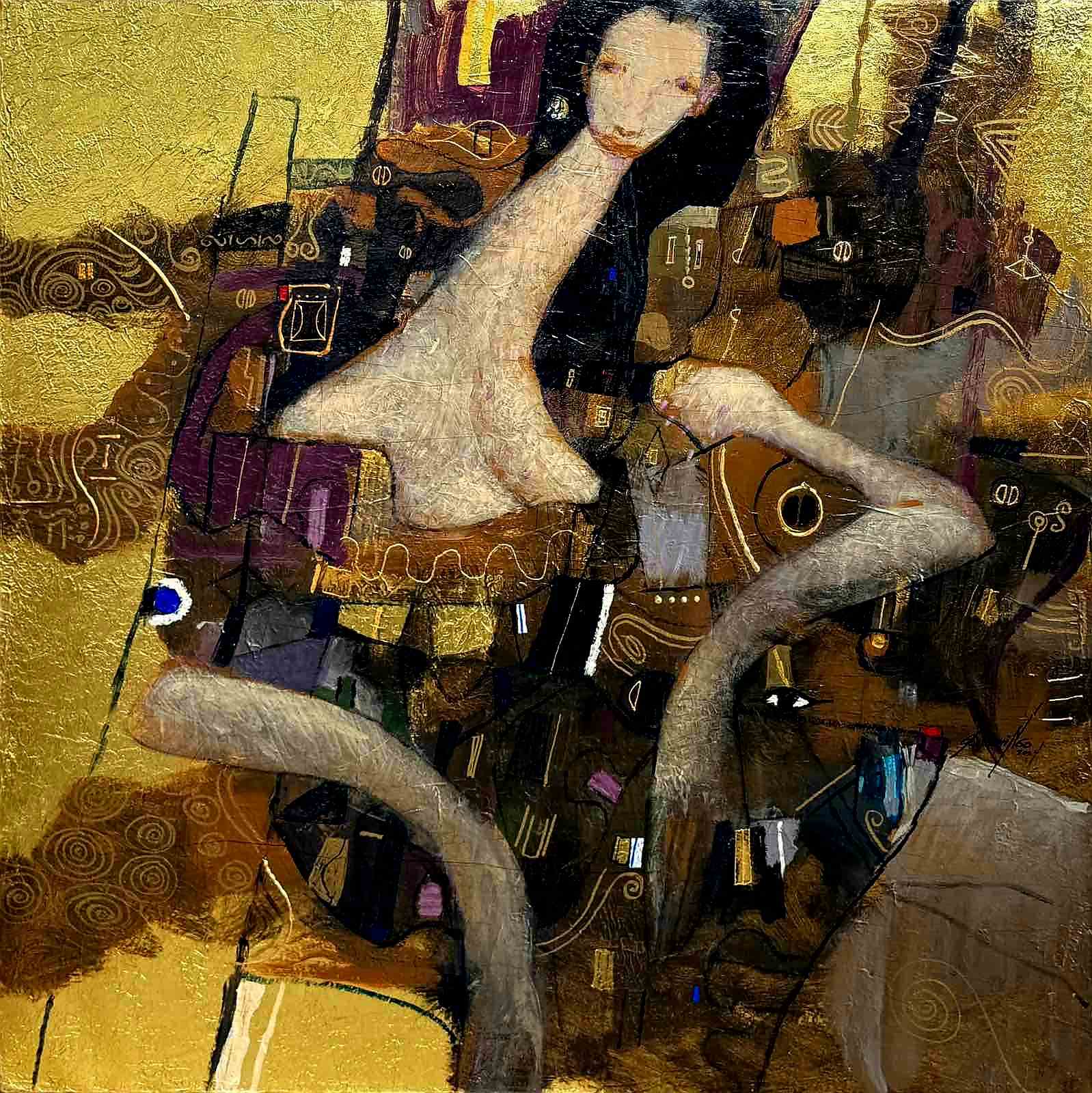
Gil Francis Maningo’s recurring theme of his Visayan muse “Carmela”.
Another featured artist is Danny Rayos del Sol, whose religious iconography of Marian-inspired portraits offers a profound meditation on the sacred and the sublime. This collaboration between two visual artists sparks a dialogue on the Visayan spirit of creativity and resilience. Titled “Pasinaya,” this dual showcase explores gold leaf as a medium of light and transcendence.
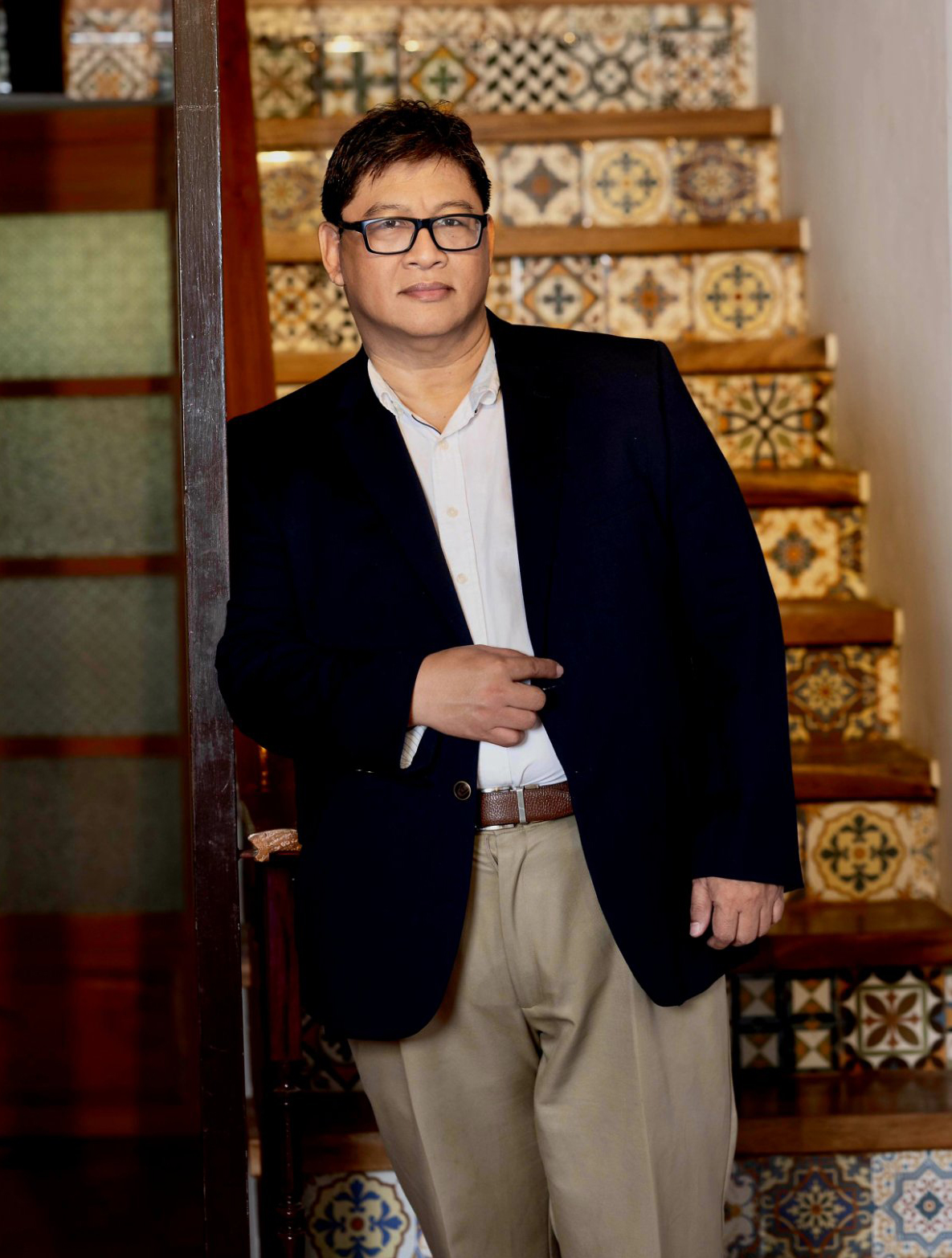
Artist Danny Reyes del Sol
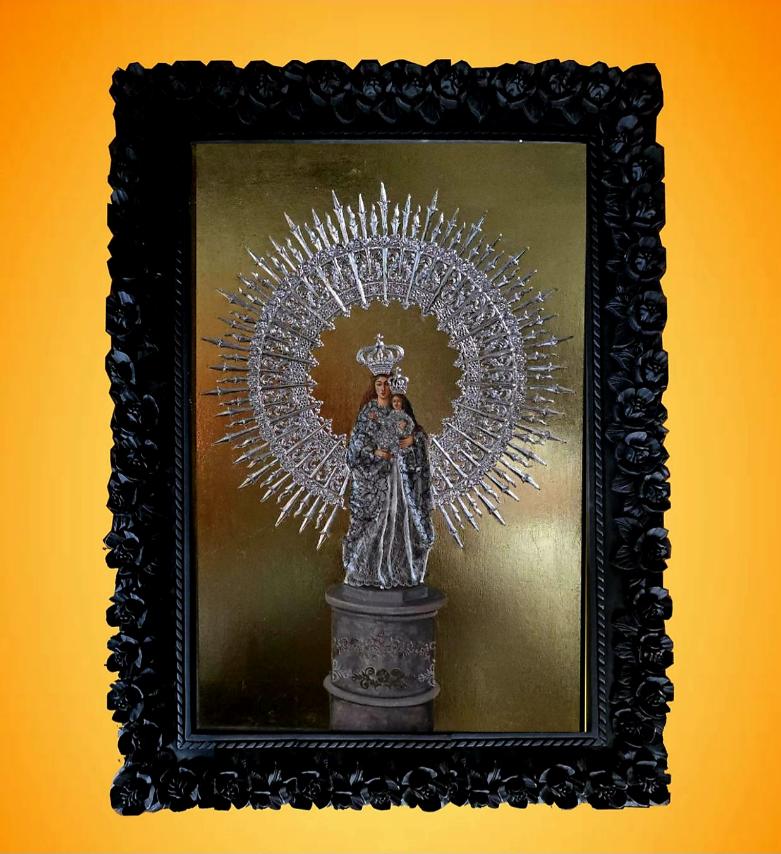
Danny Reyes del Sol’s religious iconography.
Now in its fifth year, the Visayas Art Fair has influenced a community of artists, gallerists, brokers, collectors, museum curators, and art critics—constructing a narrative that shapes how we approach and understand the artist and his work. This combination of factors, destined for popular consumption, illustrates the ways in which art and current culture have found common ground in a milieu enriched by the promise of increased revenue and the growing value of artworks.
Laurie Boquiren, Chairman of the Visayas Art Fair, elaborates on the theme, expressing a vision that celebrates the boundless imagination of unique artistic voices:
“Infinite Perspectives speaks of the countless ways artists see, interpret, and transform the world around them—reminding us that creativity knows no single point of view. Unbound Creativity embodies freedom from convention and controlled expression, allowing every artist to explore and experiment without borders.”
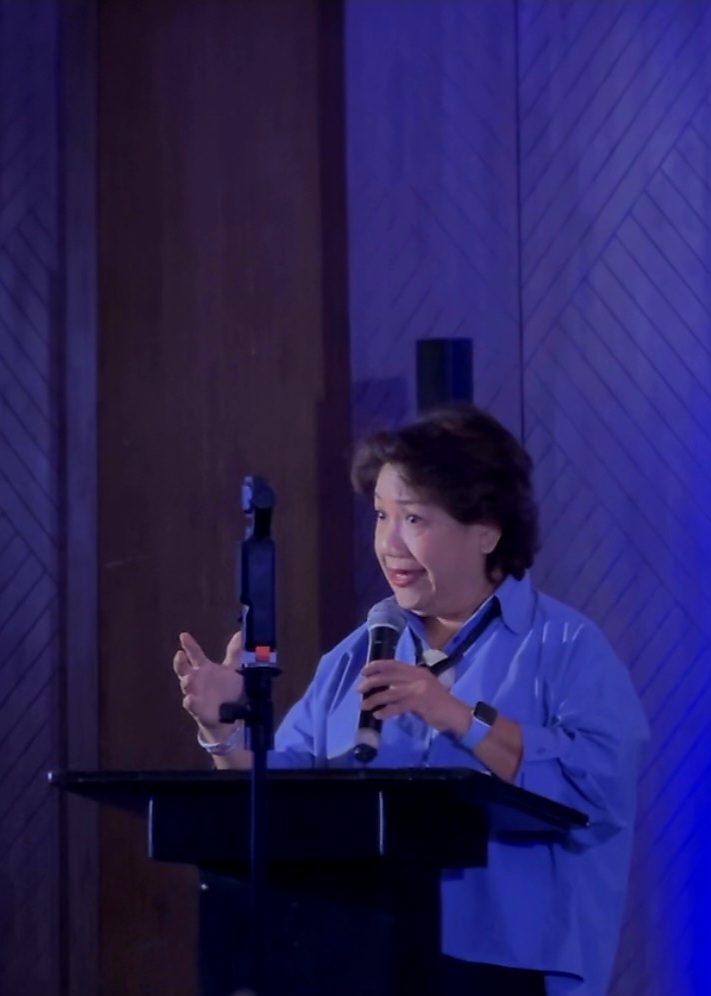
Laurie Boquiren, Chairman of the Visayas Art Fair has tirelessly championed the creative arts for the past five years.
Arts & Culture
Kultura. Kapital. Kasalukuyan: Art that Speaks of Today
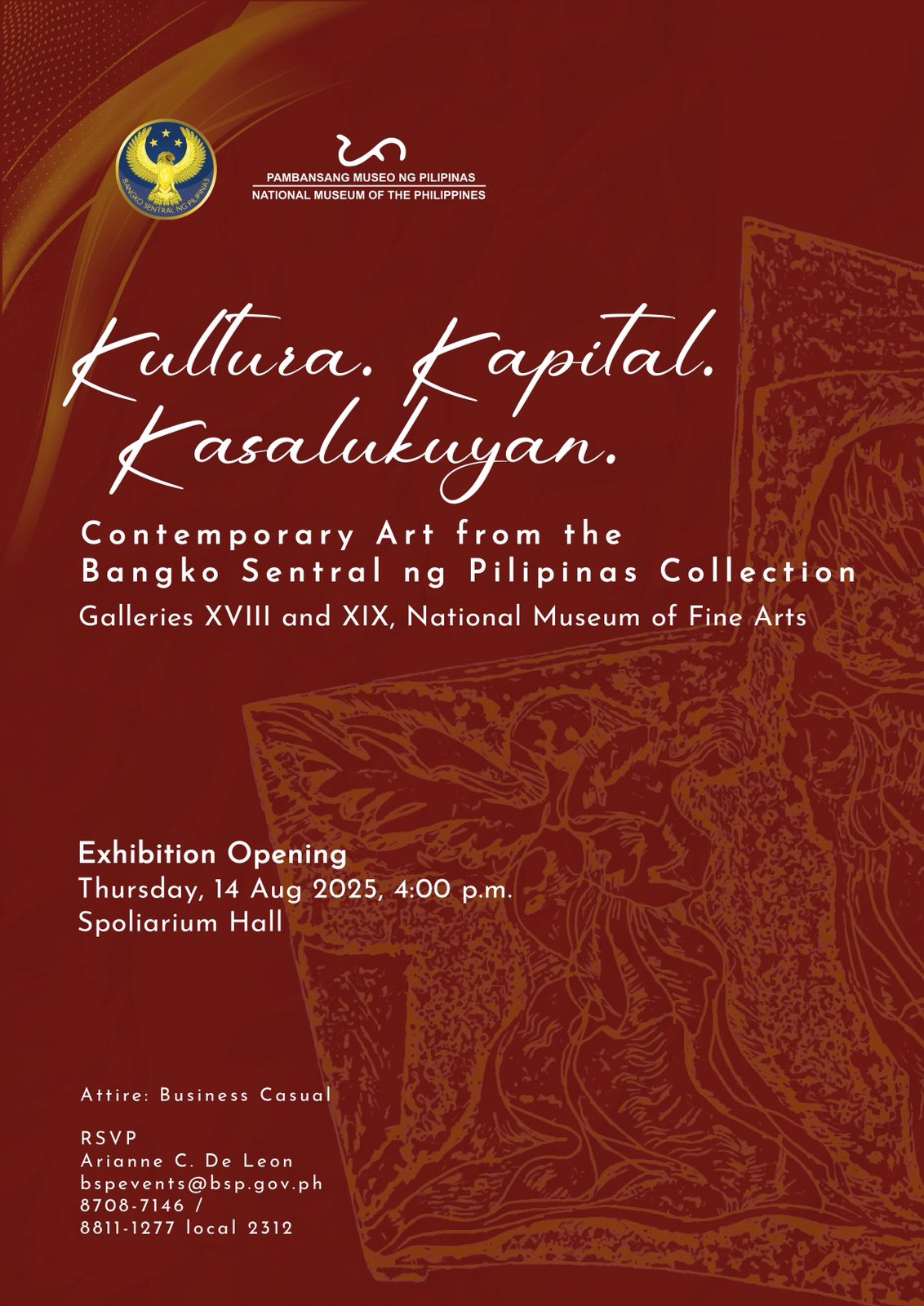
by Jose Carlos G. Campos, Board of Trustees National Museum of the Philippines
The National Museum of the Philippines (NMP) and the Bangko Sentral ng Pilipinas (BSP) recently teamed up to prove that money isn’t just for counting—it’s also for curating! Their latest joint exhibition, Kultura. Kapital. Kasalukuyan: Contemporary Art from the Bangko Sentral ng Pilipinas Collection, is now open, and it’s a real treat for art lovers and culture buffs alike.
On display are gems from the BSP’s contemporary art collection, including masterpieces by National Artist Benedicto Cabrera (Bencab), along with works by Onib Olmedo, Brenda Fajardo, Antipas Delotavo, Edgar Talusan Fernandez, and many more. Some of the artists even showed up in person—Charlie Co, Junyee, Imelda Cajipe-Endaya, Demi Padua, Joey Cobcobo, Leonard Aguinaldo, Gerardo Tan, Melvin Culaba—while others sent their family representatives, like Mayumi Habulan and Jeudi Garibay. Talk about art running in the family!
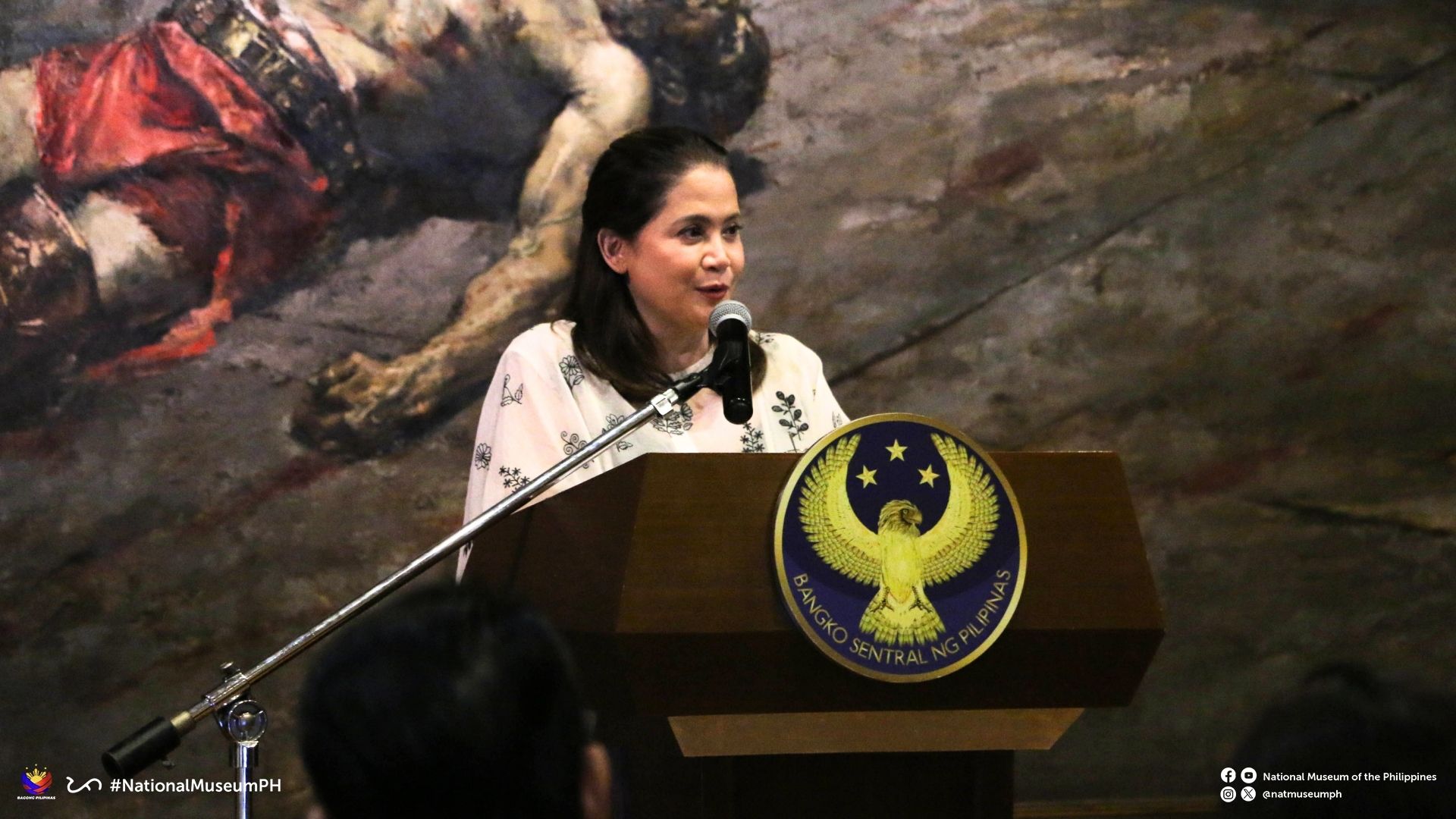
Deputy Governor General of the BSP, Berna Romulo Puyat
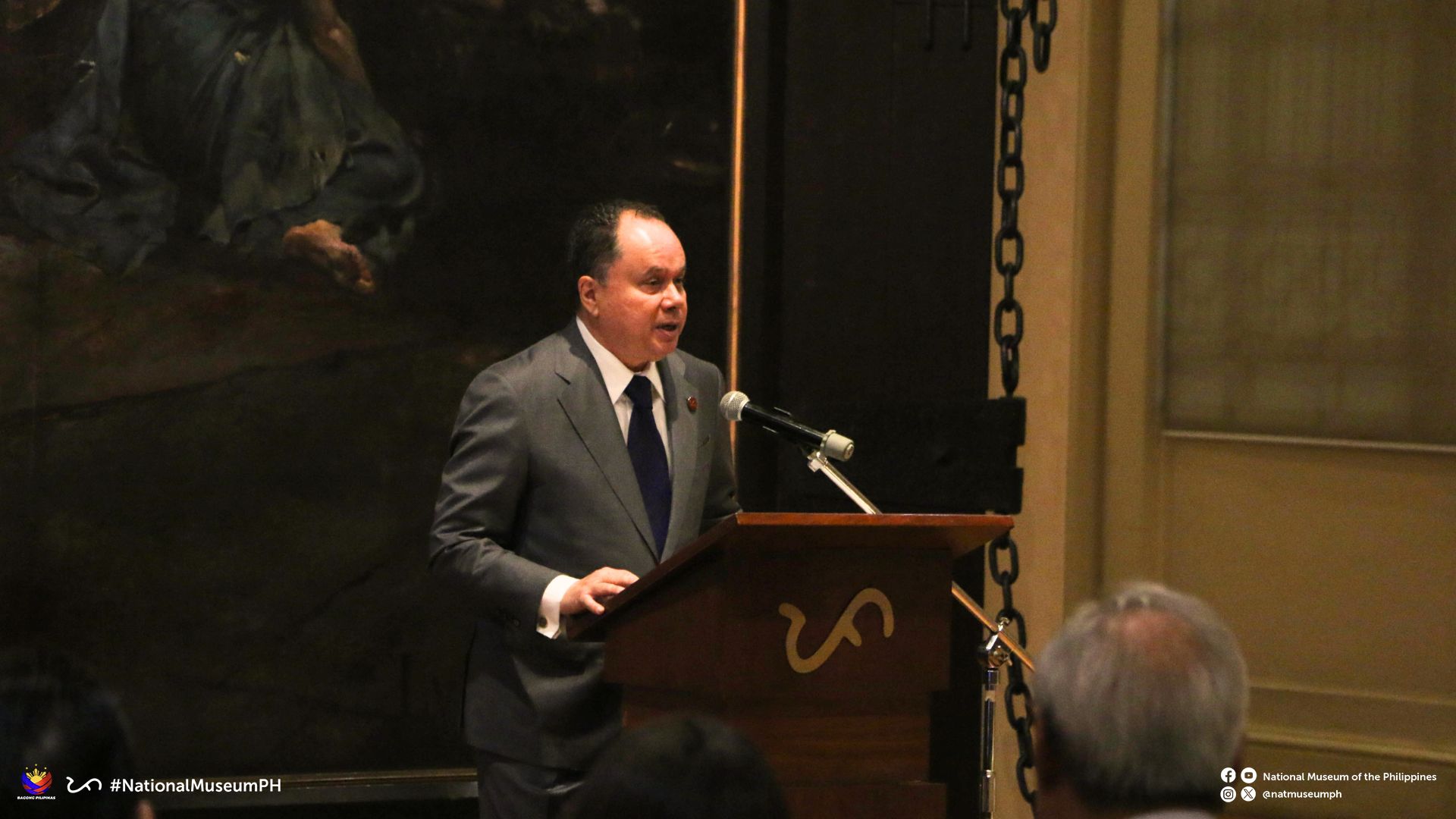
Chairman of NMP, Andoni Aboitiz
The BSP Governor Eli M. Remolona, Jr. and members of the Monetary Board joined the event, alongside former BSP Governor Amando M. Tetangco, Jr., Ms. Tess Espenilla (wife of the late Nestor A. Espenilla, Jr.), and the ever-graceful former Central Bank Governor Jaime C. Laya, who gave a short but enlightening talk about the BSP art collection.
From the NMP, Chairman Andoni Aboitiz, Director-General Jeremy Barns, and fellow trustees NCCA Chairman Victorino Mapa Manalo, Carlo Ebeo, and Jose Carlos Garcia-Campos also graced the occasion. Chairman Aboitiz expressed gratitude to the BSP for renewing its partnership, calling the exhibition a shining example of how financial institutions can also enrich our cultural wealth.
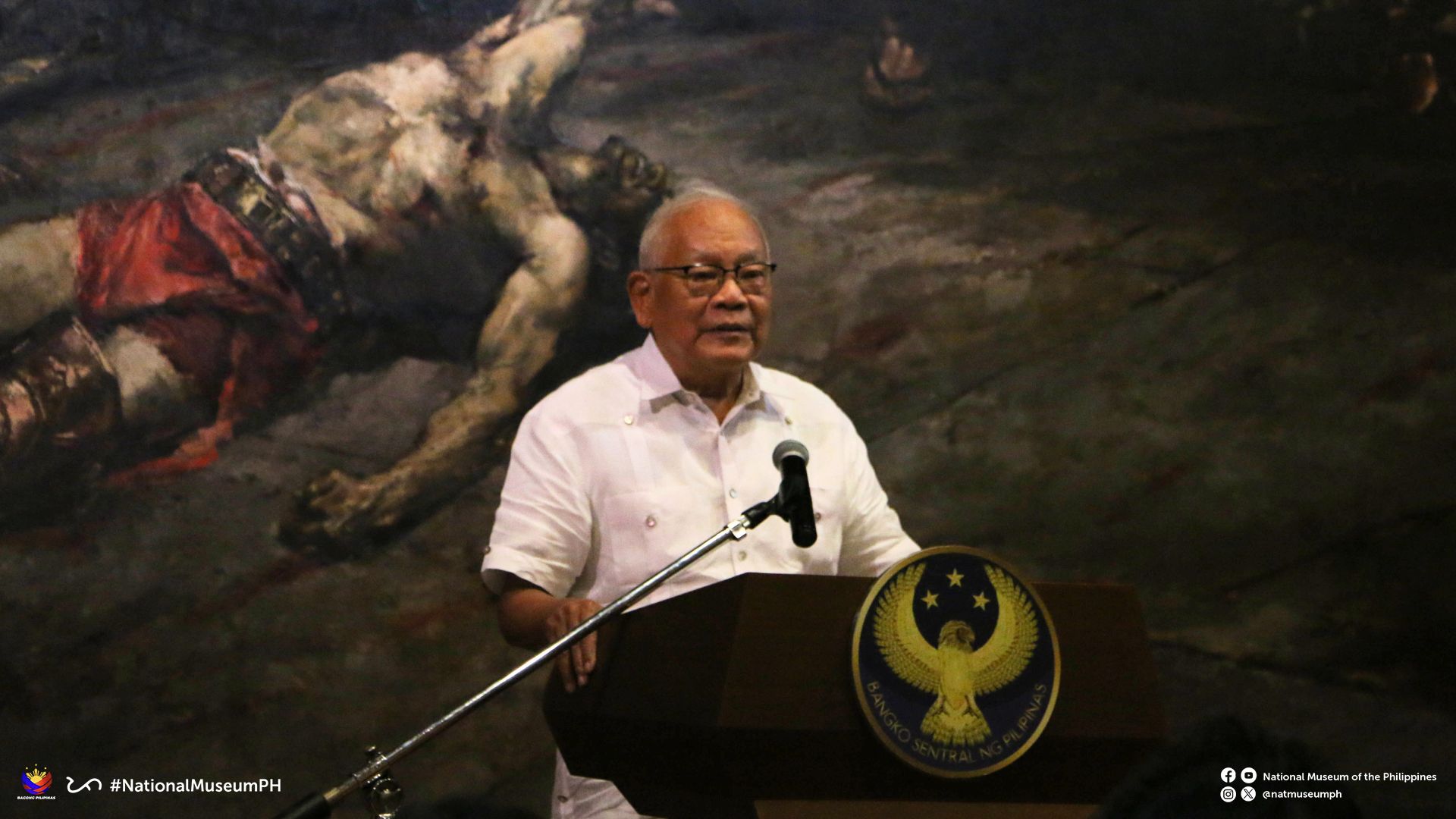
Former Governor of BSP Jaime Laya
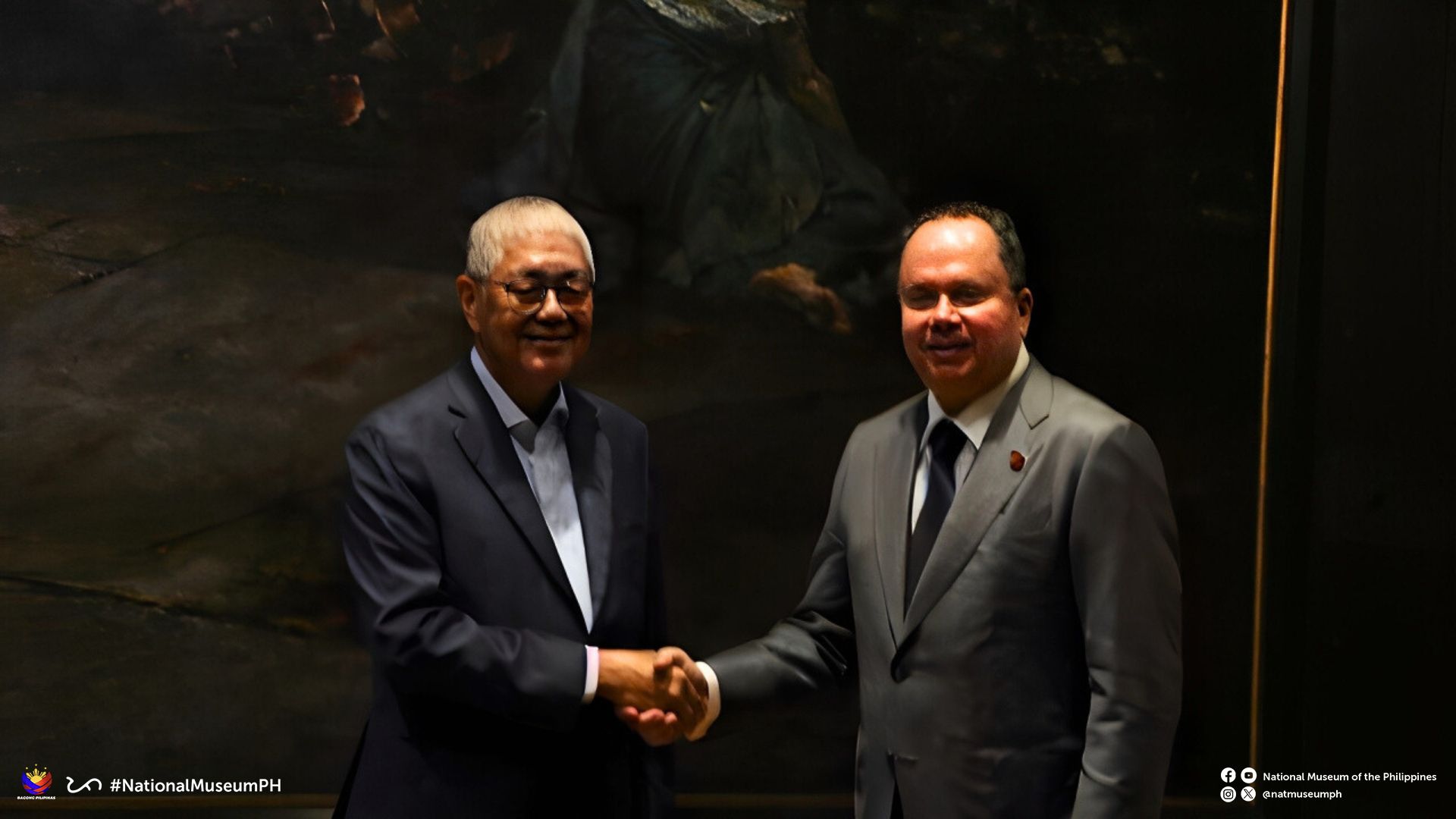
Governor of BSP Eli M. Remona and Chairman of NMP Board Andoni Aboitiz
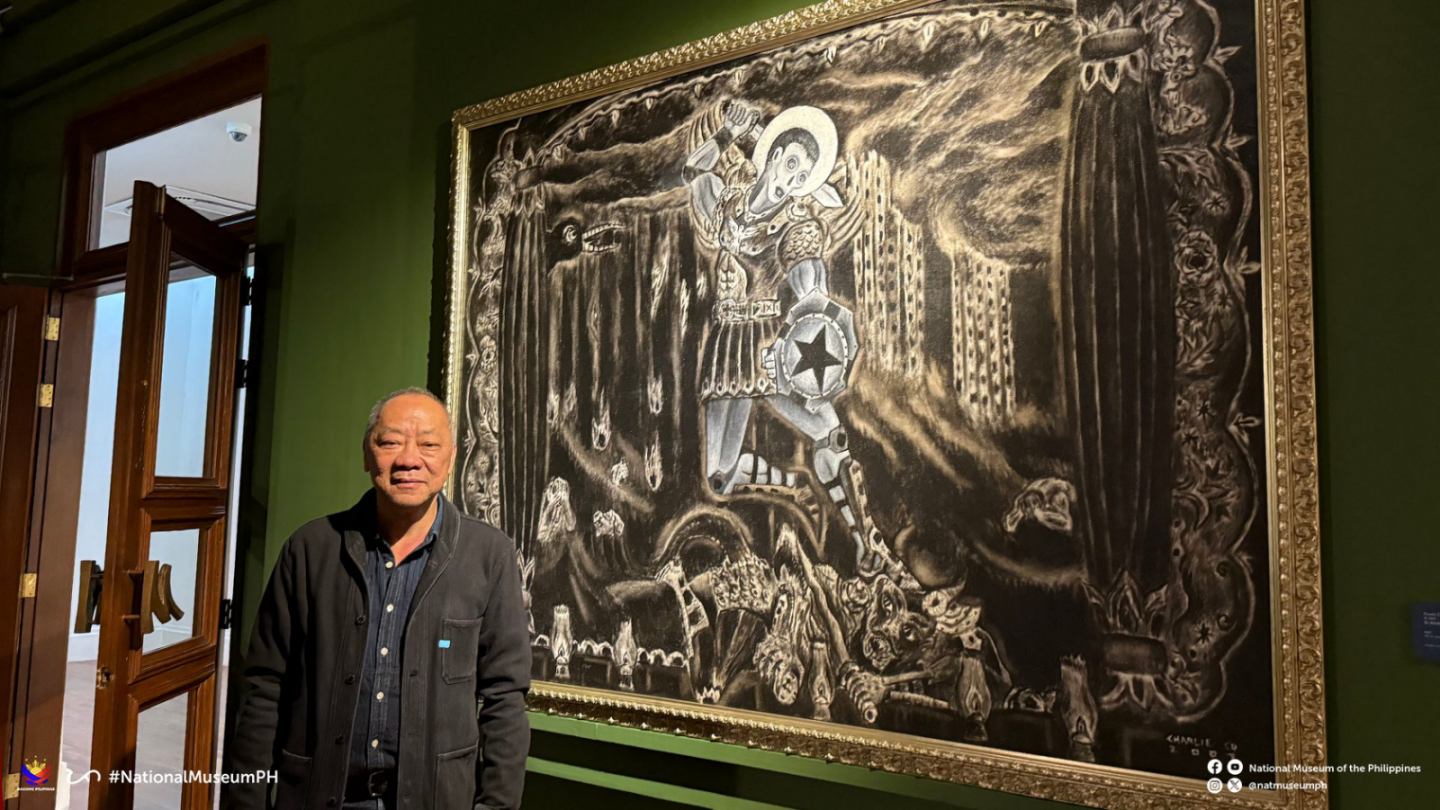
Artist Charlie Co
Before the official launch, a special media preview was held on 5 August, hosted by BSP Deputy Governor Bernadette Romulo-Puyat and DG Jeremy Barns. It gave lucky guests a sneak peek at the collection—because sometimes, even art likes to play “hard to get.”
The exhibition Kultura. Kapital. Kasalukuyan will run until November 2027 at Galleries XVIII and XIX, 3/F, National Museum of Fine Arts. Doors are open daily, 9:00 AM to 6:00 PM. So if you’re looking for something enriching that won’t hurt your wallet (admission is free!), this is your sign to visit. After all, the best kind of interest is cultural interest.
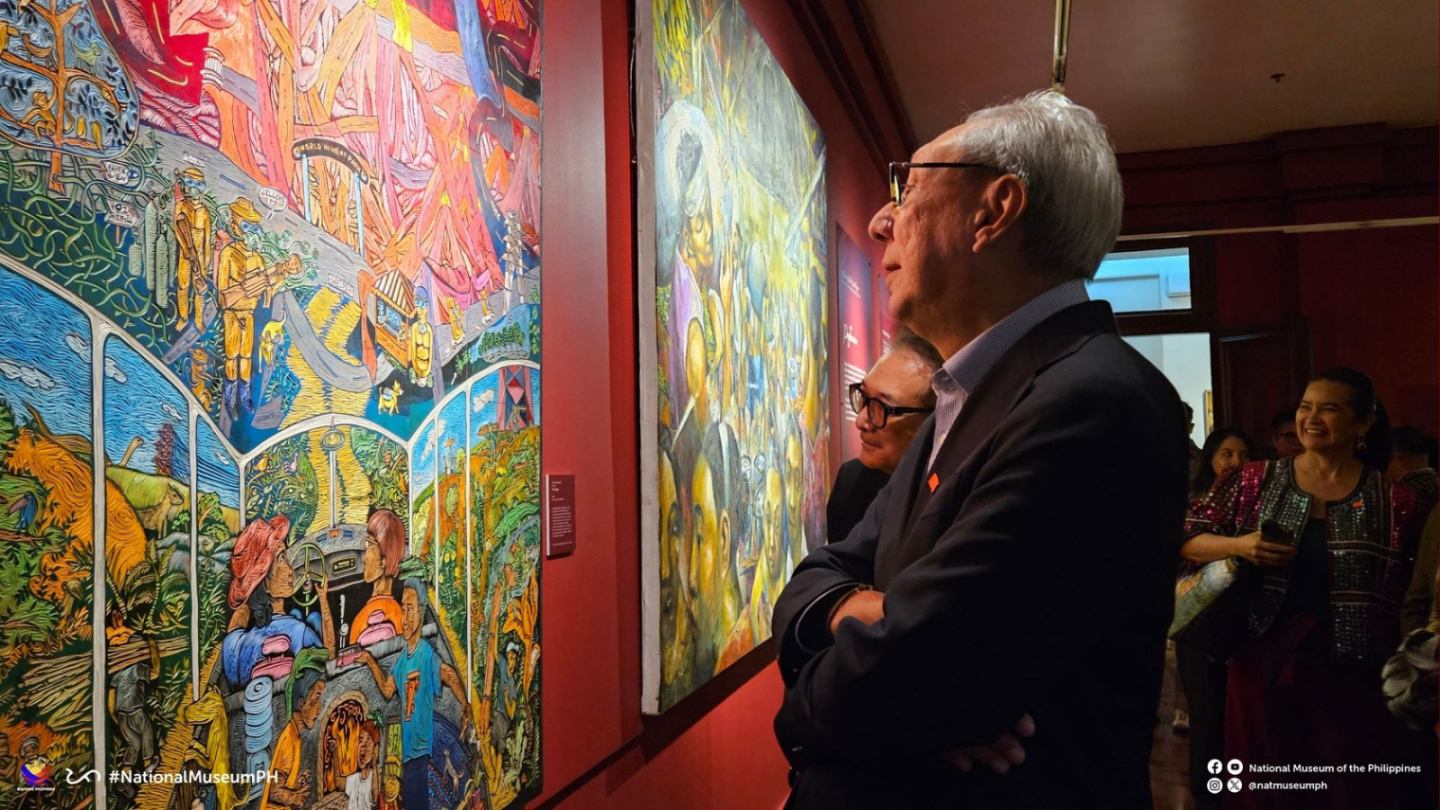
Monetary Board of the BSP, Walter C. Wassmer
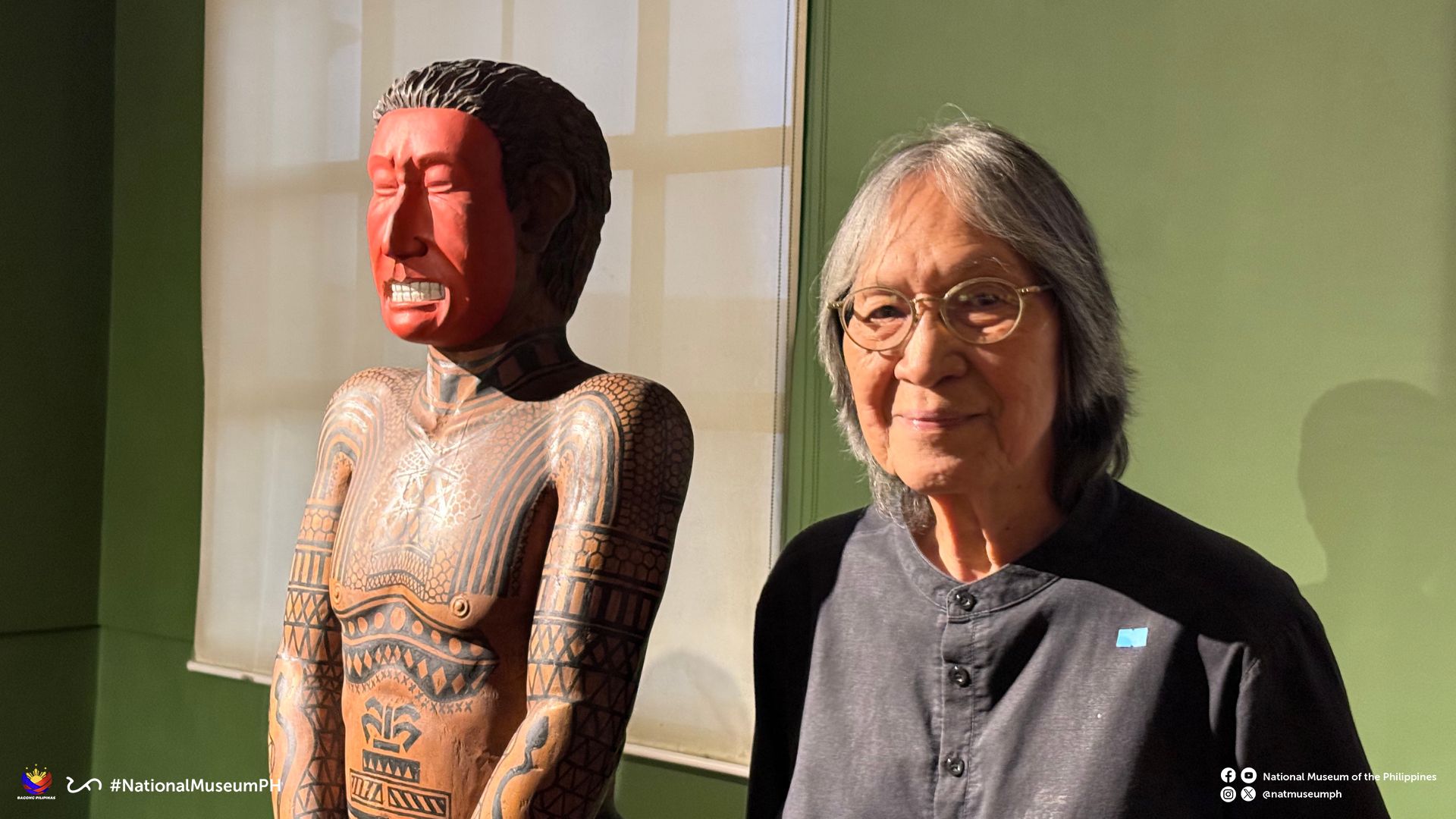
Luis Yee, Jr. aka ‘Junyee’ The Artist beside his Sculpture
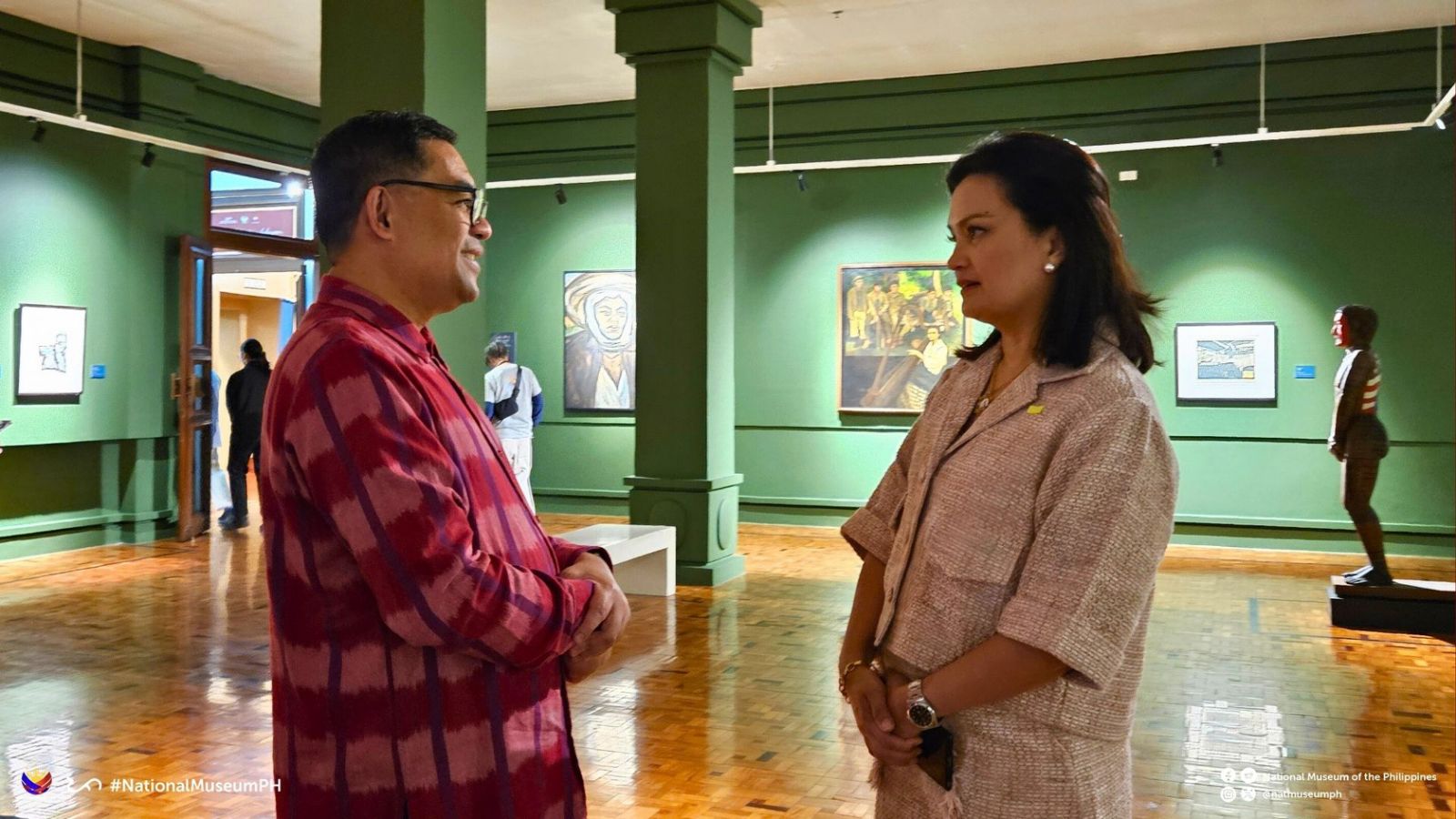
Arvin Manuel Villalon, Acting Deputy Director General for Museums, NMP with Ms. Daphne Osena Paez
Arts & Culture
Asia’s Fashion Czar I Knew as Tito Pitoy; Remembrance of a Friendship Beyond Fashion with Designer Jose R. Moreno
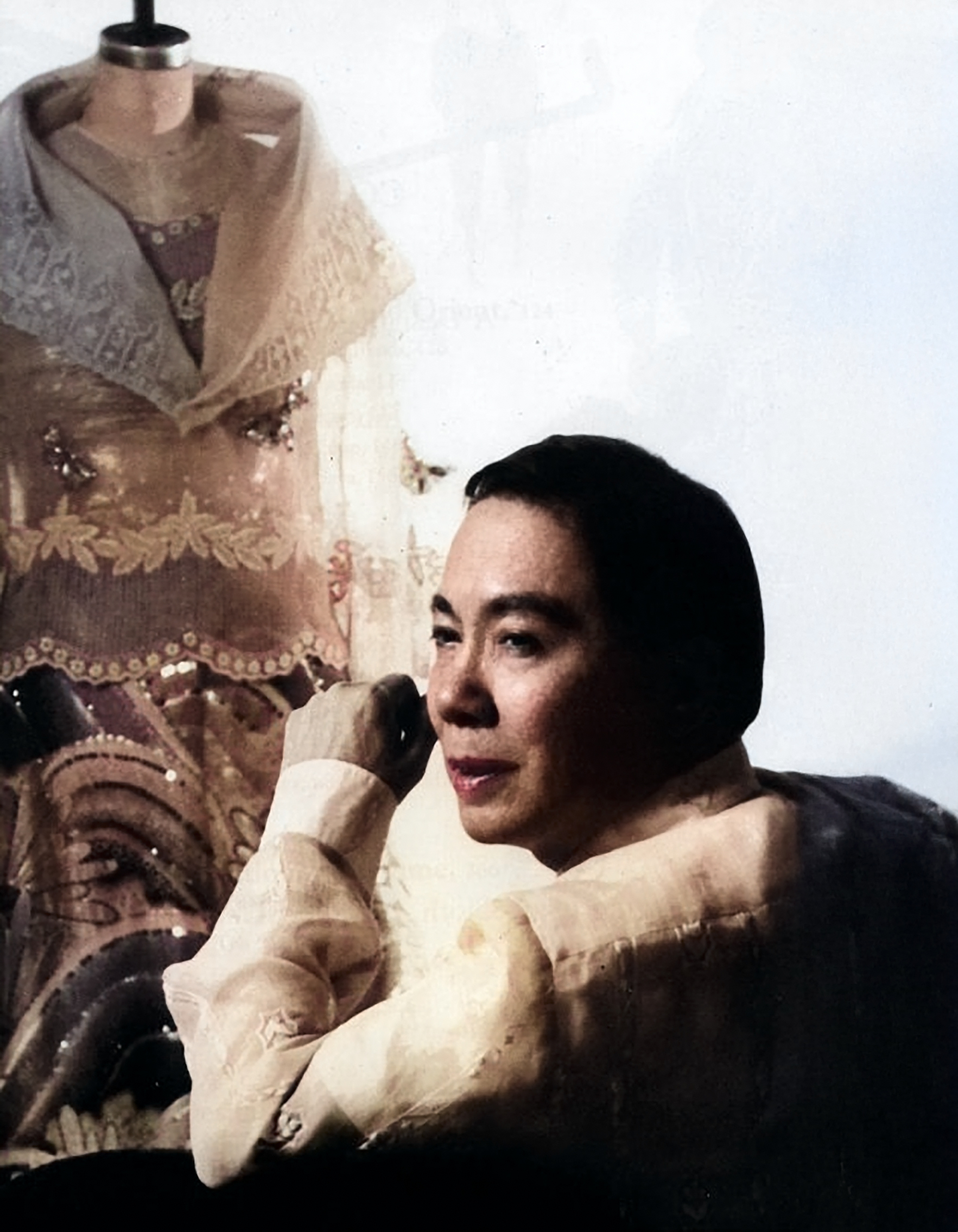
by Jose Carlos G. Campos, Board of Trustees National Museum of the Philippines
My childhood encounter with the famous Pitoy Moreno happened when I was eight years old. My maternal grandmother, Leonila D. Garcia, the former First Lady of the Philippines, and my mother, Linda G. Campos, along with my Dimataga aunts, brought me to his legendary atelier on General Malvar Street in Malate, Manila. These were the unhurried years of the 1970s.
As we approached the atelier, I was enchanted by its fine appointments. The cerulean blue and canary yellow striped canopies shaded tall bay windows draped in fine lace—no signage needed, the designer’s elegance spoke for itself. Inside, we were led to a hallway adorned with Art Deco wooden filigree, and there was Pitoy Moreno himself waiting with open arms—”Kamusta na, Inday and Baby Linda,” as he fondly called Lola and Mommy.
“Ahhh Pitoy, it’s been a while,” Lola spoke with joy.
“Oh eto, may kasal na naman,” my mom teasingly smiled.
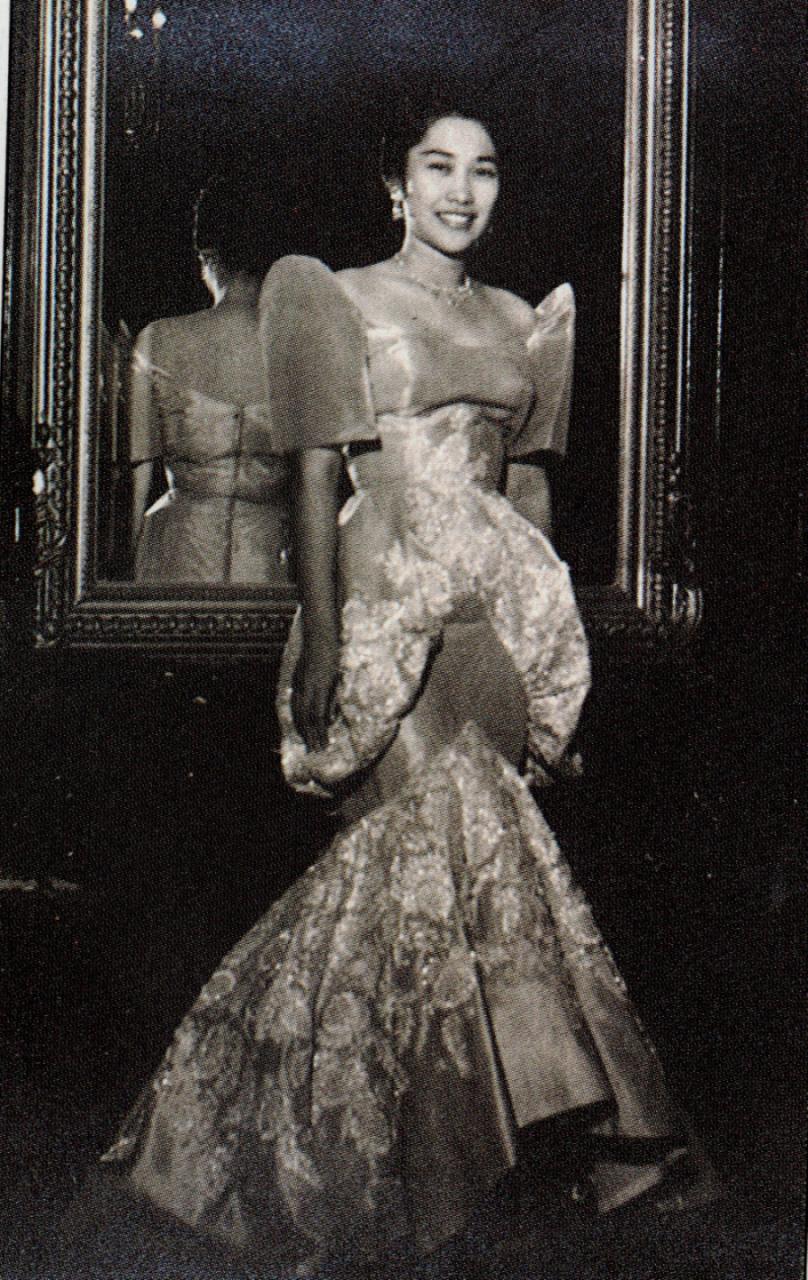
Linda Garcia Campos and Pitoy Moreno’s friendship started when they were students in the University of the Philippines in Diliman.
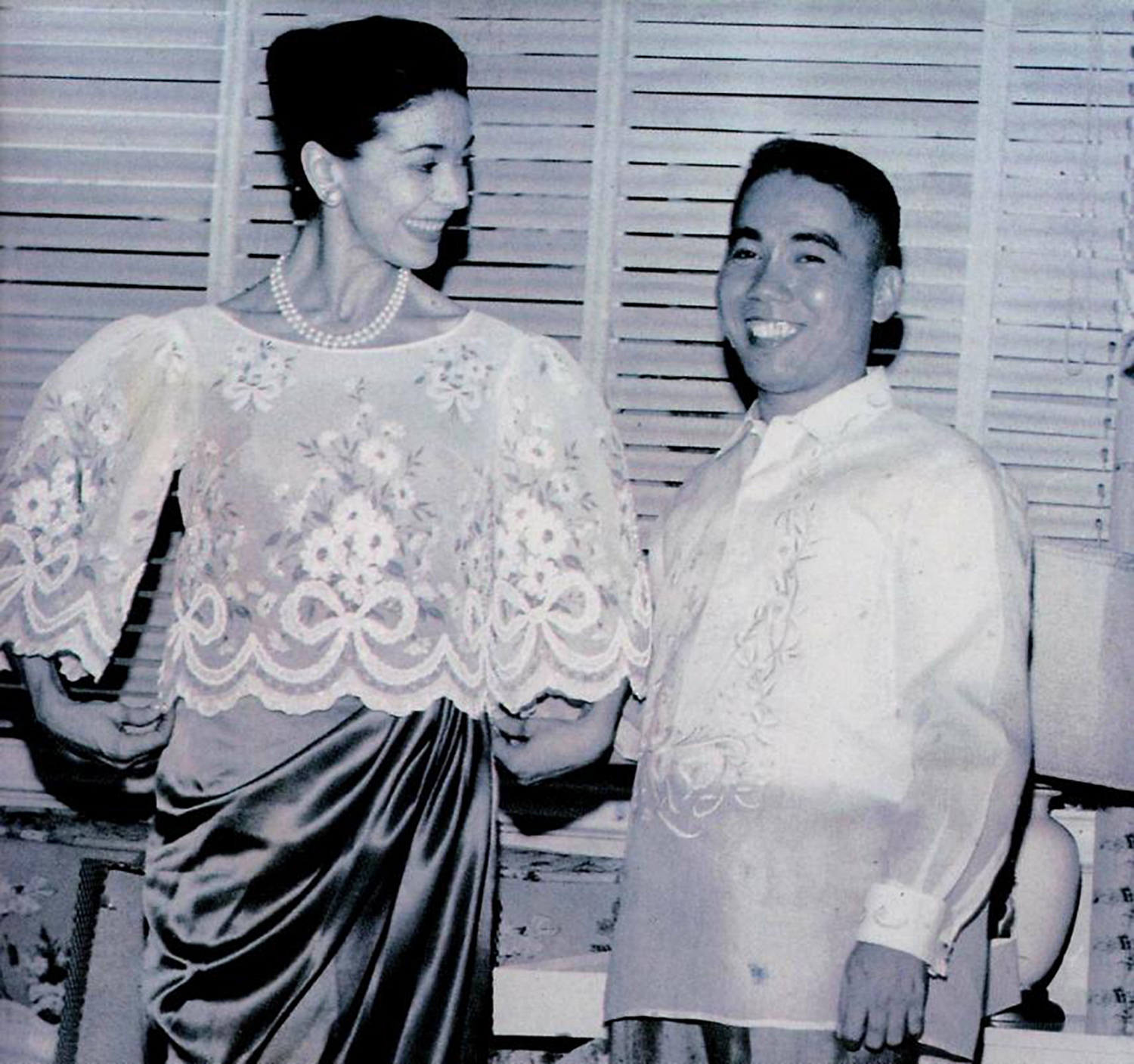
When Dame Margot Fonteyn came for a visit to Manila, Pitoy Moreno dressed her up for an occasion.
We had entered a world of beauty—porcelain figurines, ancient earthenware and pre-colonial relics. It was like stepping into a looking glass, only Pitoy could have imagined.
Destiny led me back years later when my mother Linda told me that Pitoy Moreno was working on his second book, Philippine Costume, and needed research material and editorial advice. At this point, around the 1990s, I was in between assignments—unsure of how a broadcasting graduate like me could possibly contribute to a fashion icon’s masterpiece. Fortunately, I agreed to the project.
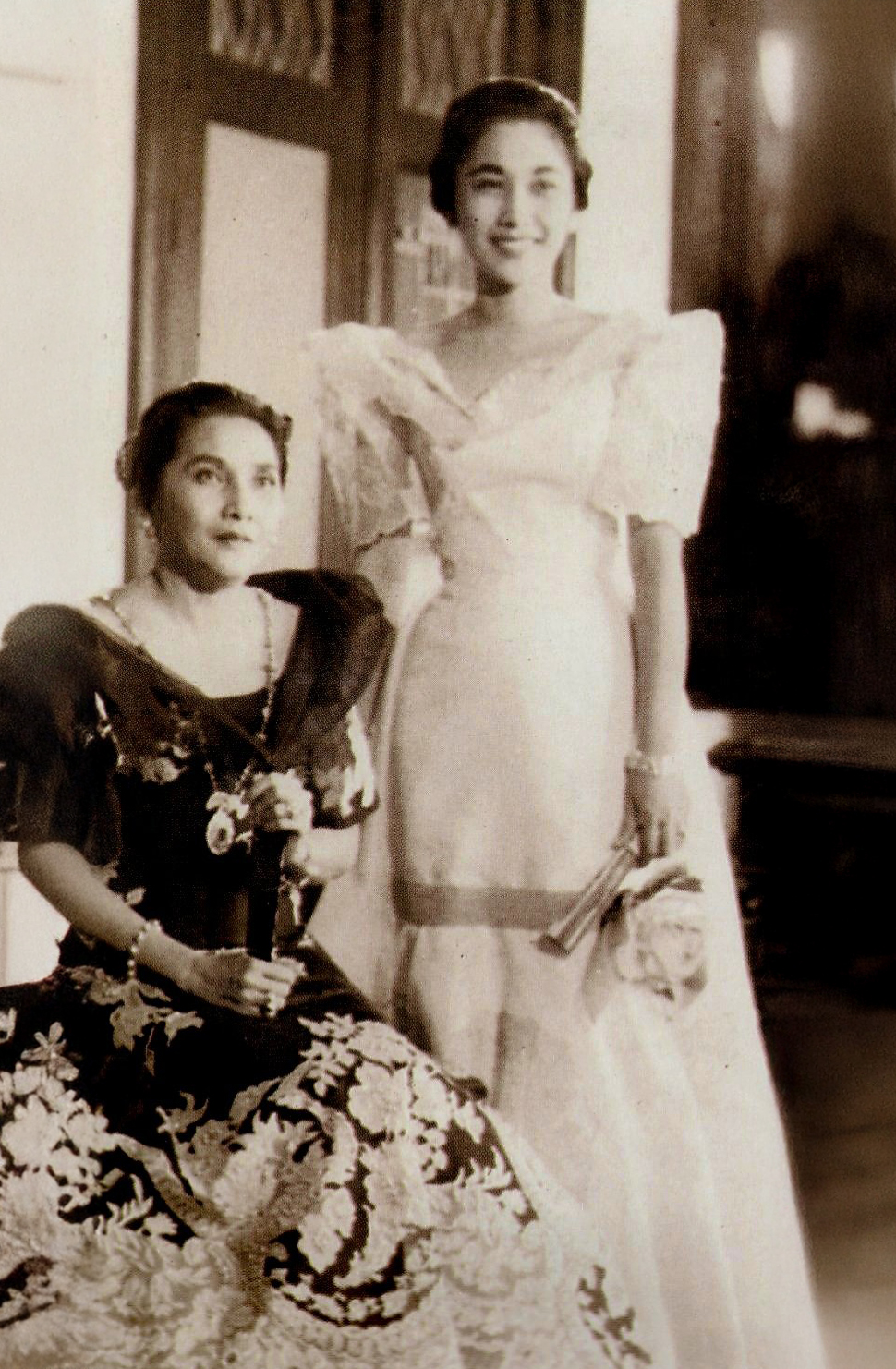
Former First Lady Leonila D. Garcia and daughter Linda G. Campos in Malacañang Palace.
Returning to the designer’s atelier brought back a rush of pleasant memories. The gate opened, and there stood Pitoy Moreno, beaming as always.
“Come in, hijo. Let me show you what I have in mind—and call me Tito Pitoy, okay?”
He led me to his worktable.
“I want to publish a book that tells the story of Philippine fashion—from our pre-colonial roots to the present. A designer’s collection of images and heritage expressed in clothing.”
I was awestruck. “How can I help you?” I inquired.
“Did you know that your mother, Linda, was my barkada in the University of the Philippines in Diliman?” he grinned.
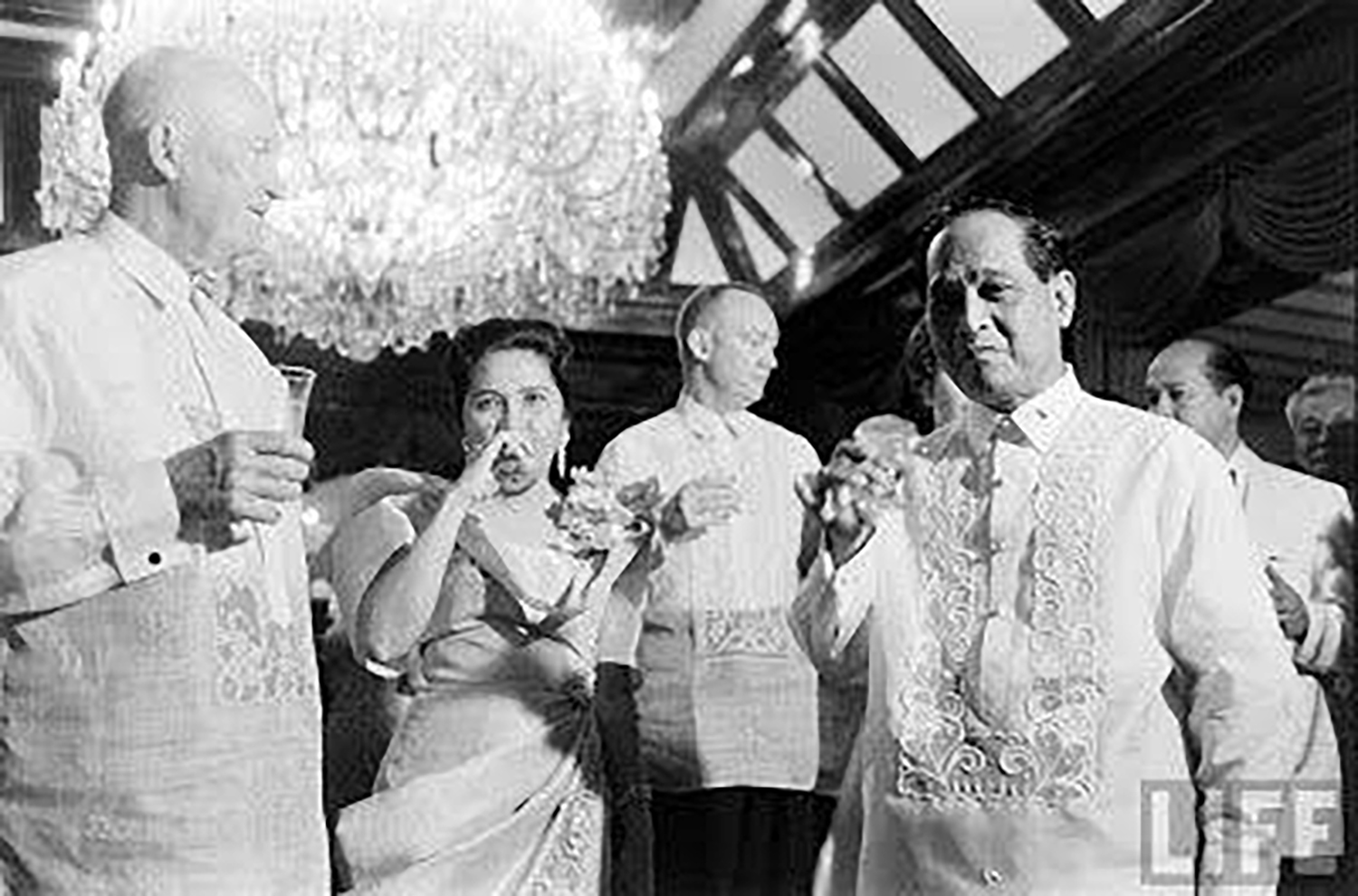
US President Dwight Eisenhower with First Lady Leonila Garcia and President Carlos Garcia in a state dinner at Malacañang Palace in Manila.
That friendship soon led to one of the proudest moments of the designer’s life. He had the opportunity to dress not only the First Lady Leonila D. Garcia but also President Carlos P. Garcia during his term. It was also during this time that the President of the United States, Dwight Eisenhower, came for an official visit to Manila. The designer was able to make clothes for the President, his daughter, and his staff.
“Eisenhower even asked for discounts on the barong Tagalog,” Tito Pitoy laughed.
Tito Pitoy then asked if I could find a terno he had made for my Lola, the former First Lady, which she wore for President Eisenhower’s state visit in 1960.
“How about her other ternos, dated from the 1920s to the 1960s?” I offered.
He lit up.
I scoured my Lola’s extensive closet—it felt like unearthing a legacy. Tucked behind layers of vintage ternos from countless fashion designers, I found that terno, which was photographed by Dick Baldovino along with other pieces for the book project. Once the project was finished and I myself had moved on, my bond with Tito Pitoy never wavered.
When my Lola passed away, he was deeply touched when I personally informed him of the sad news. Once, at the wake of former Vice President Salvador Laurel, he asked me to assist him in the placement of the medals in the chapel.
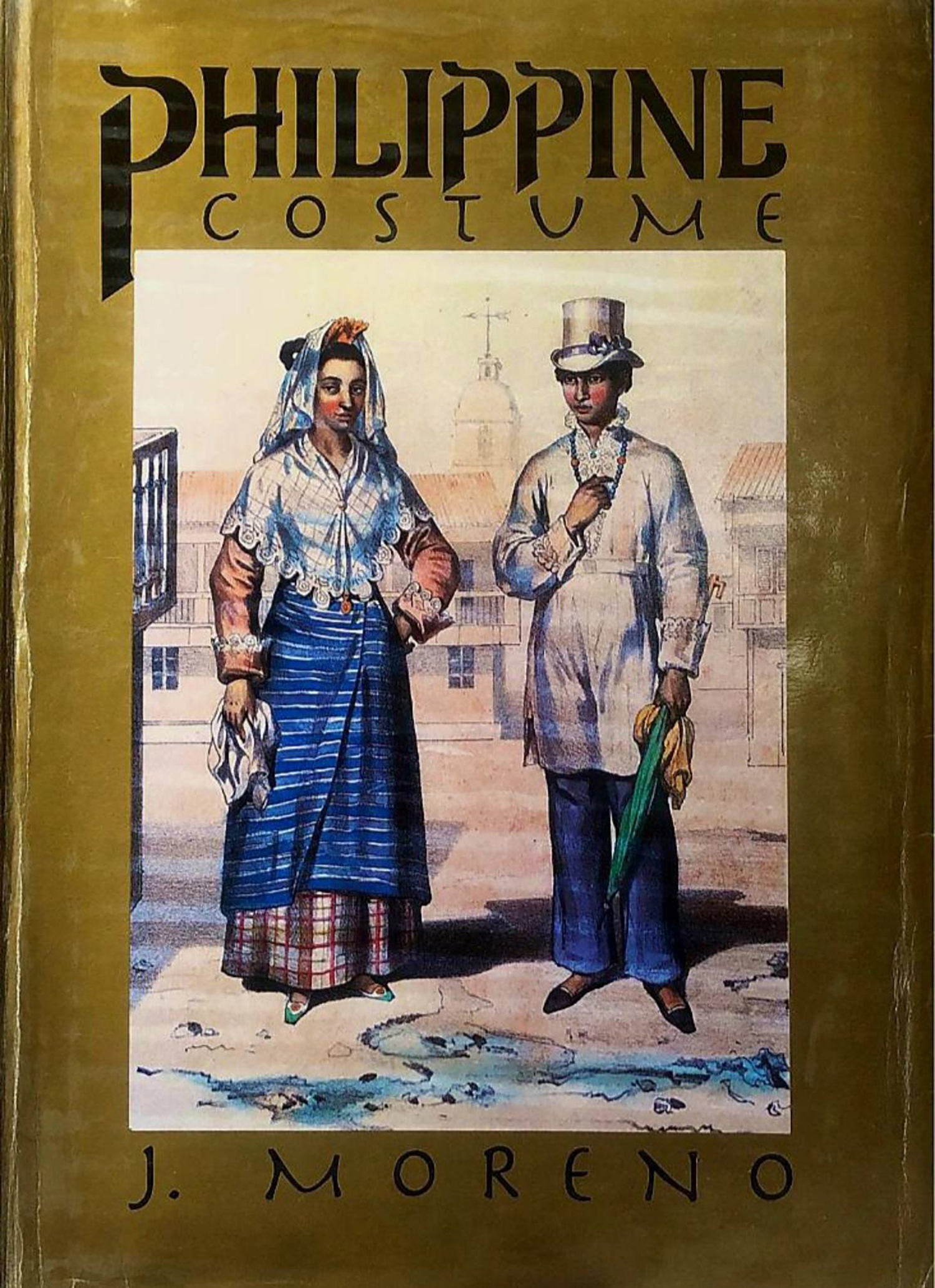
Philippine Costume by Jose Moreno is the designer’s collection of images and heritage expressed in clothing.
Tito Pitoy later invited me to his 80th birthday celebration—a dazzling Manila affair in 2012. During the evening’s festivities, he handed me a printed copy of Philippine Costume and added warmly,
“Thank you, hijo. I’ll call on you for the next one.”
The highlight of his career—and his most unforgettable moment—came during the Metro Magazine Gala fashion show: A Tribute to Pitoy Moreno, Fashion Icon. A collection of evening gowns spanning six decades—many of them unseen and tucked away in his atelier—were revealed that night. When the finale came, Tito Pitoy walked the stage, triumphant and waving to a sea of admirers. Longtime friends from the industry, society’s finest, and fashionistas rose from their seats and gave him a standing ovation.
It wasn’t just to celebrate his craft and ingenuity—it was to honor the man who brought elegance, history, and heart in every stitch.
-

 Style2 months ago
Style2 months agoHappy Melendres Traipsing Around Manhattan in Non-Stop Armani
-

 Arts & Culture3 months ago
Arts & Culture3 months agoKultura. Kapital. Kasalukuyan: Art that Speaks of Today
-
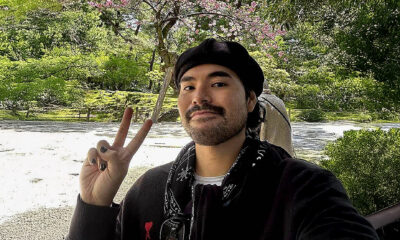
 Prime Target2 months ago
Prime Target2 months agoMiko Sarmiento: Turning Silk Scarves Into Works of Art
-
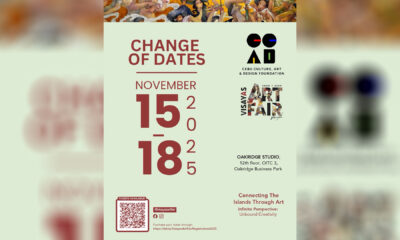
 Arts & Culture1 month ago
Arts & Culture1 month agoVisayas Art Fair Year 5: Infinite Perspectives, Unbound Creativity
-
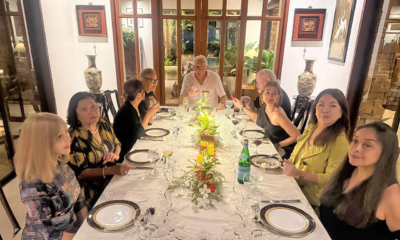
 The Scene3 months ago
The Scene3 months agoAnother Elegant Dinner at Chez Marguerite
-

 Prime Target3 months ago
Prime Target3 months agoLuna Vdl–Endless Summers in Siargao
-

 The Scene3 months ago
The Scene3 months agoA Stylish Soirée: Cebu’s Elite Celebrate Jackie Deen Lotzoff at Mad Thai
-
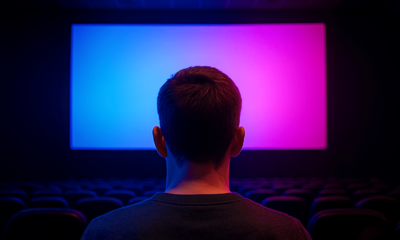
 QuickFx2 months ago
QuickFx2 months agoI Lost It at the Movies: Five of the Most Significant Films of the 1960s


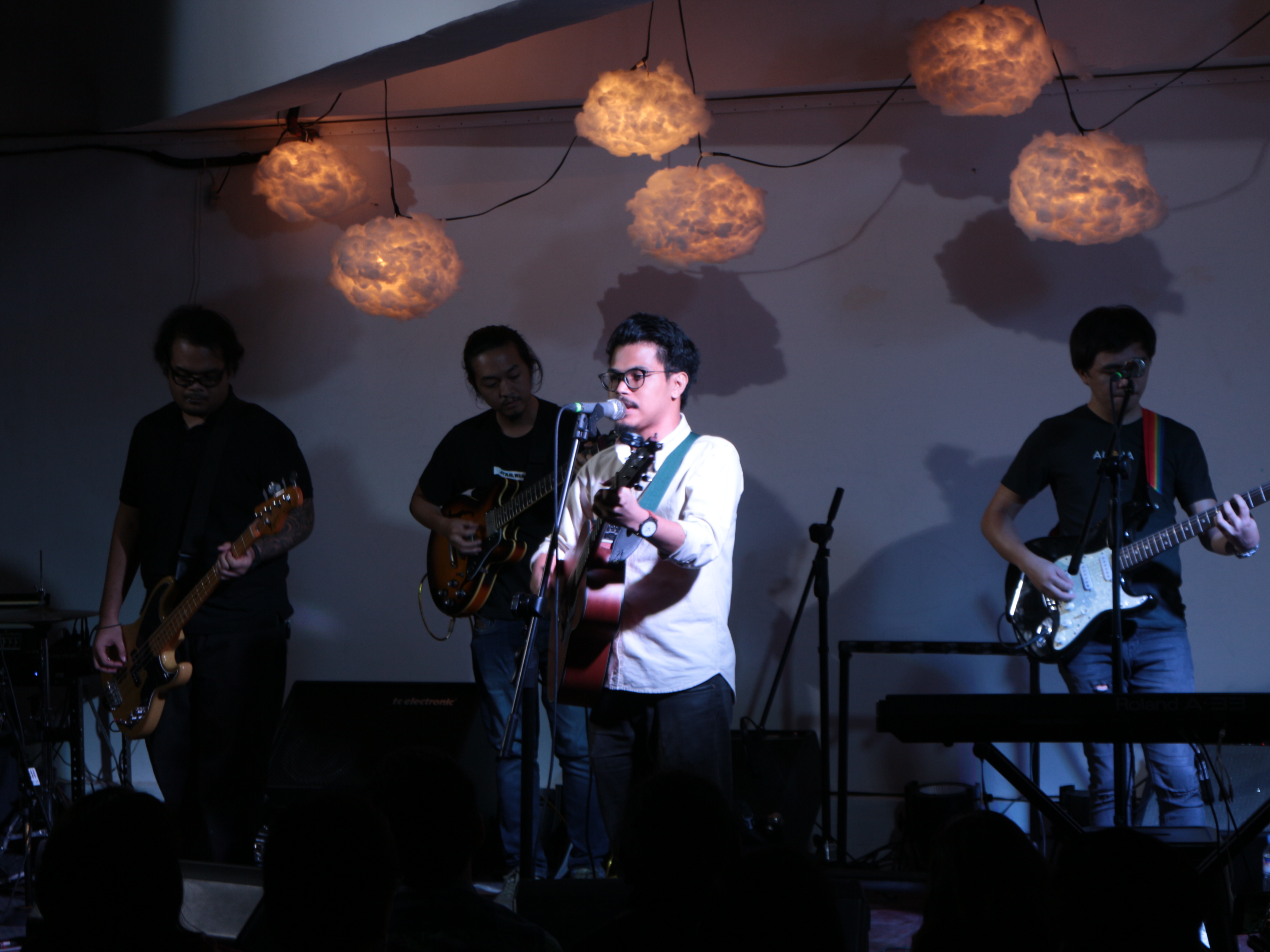

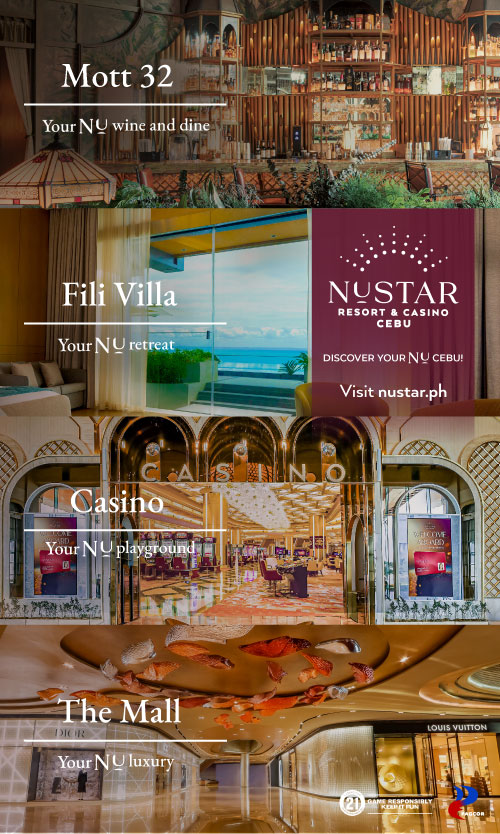



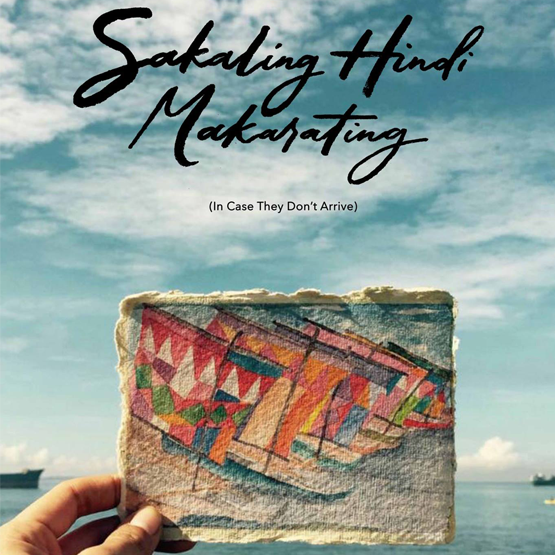




You must be logged in to post a comment Login